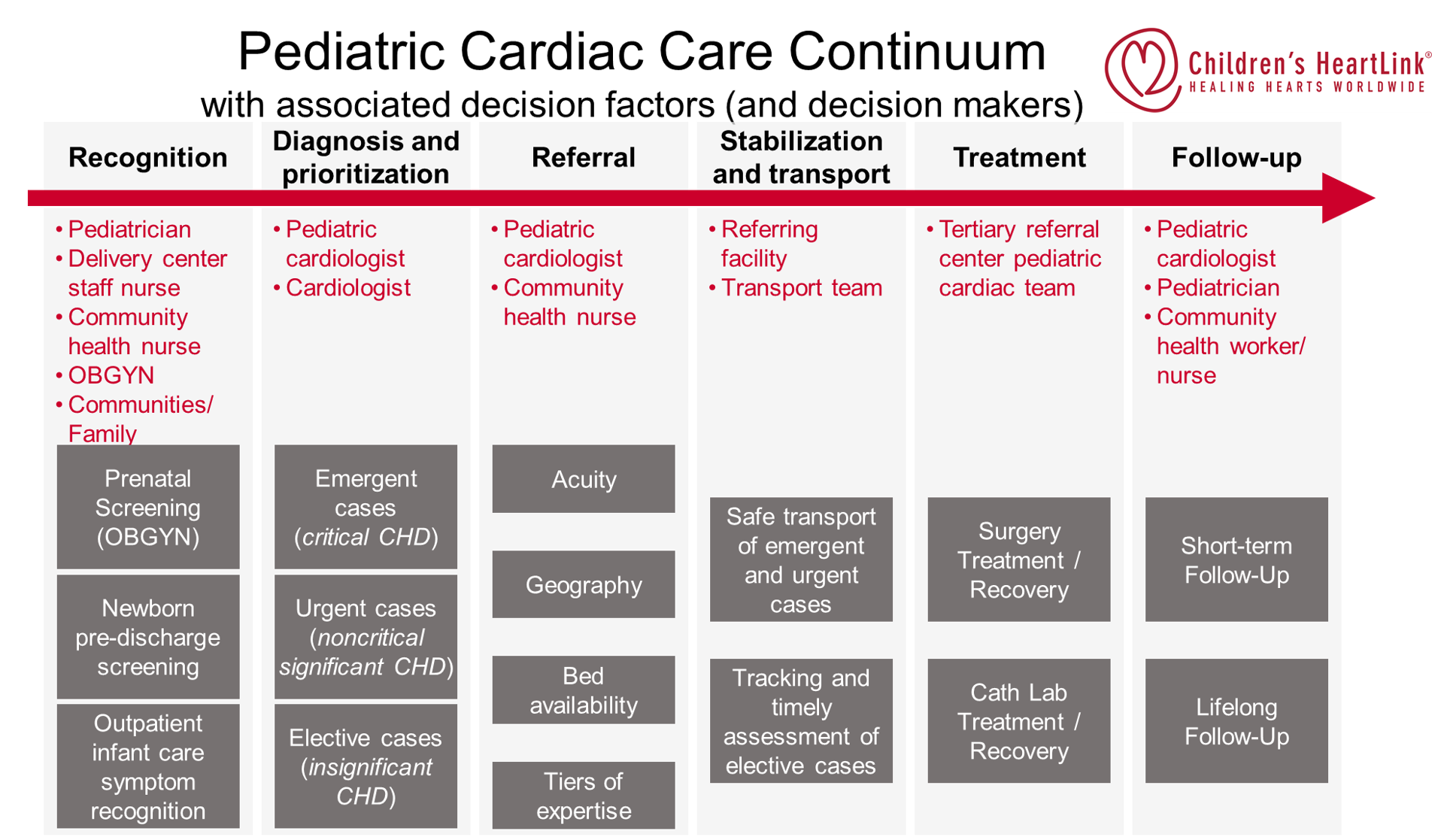Published on December 16, 2021
In this blog post, our Vice President of Global Strategy and Advocacy Bistra Zheleva shares how Children’s HeartLink helped to connect the local government in the Indian state of Kerala and its health providers to integrate services for children with congenital heart disease (CHD). This innovative program for CHD based on a population health approach aims to improve the health of the entire population and reduce health inequities. It has contributed to significant reductions in infant deaths in Kerala from 12 to 7 babies per 1,000 births. This became the lowest infant mortality rate in India.
In October 2021, a manuscript describing Children’s HeartLink’s partnership with the Kerala Government and Children’s HeartLink Center of Excellence Amrita Institute of Medical Sciences on the Implementation of a population health program for congenital heart disease was published. We believe this is the first such program for CHD services integration in primary care in a low- and middle-income country.
The impetus for the Kerala Government for engaging in this program was their desire to lower infant mortality after a local study showed that CHD was a major contributor to it. We believe our efforts described in the paper have contributed to reductions in infant mortality in Kerala, where they reported an observed decline in infant mortality rate from 12 to 7 babies per 1,000.
A key component of the program was the development of a Patient Care Pathway for CHD to help to identify what capacity exists at each of those steps and where the interventions need to happen. To our knowledge, no such model existed before. After this process, training and capacity building can be planned at each section of the pathway for the development or integration of the necessary CHD services.

In the case of Kerala, the local team relied on the preexisting structures in primary care implemented through the national RBSK program for screening and intervention, included was funding for children 0-18 years of age for diseases, defects at birth and disabilities. Since Kerala already had several public and private centers ready and willing to provide surgical care, most of the interventions were on training health care workers in the primary and secondary care level to screen and identify newborns and children with CHD and provide follow-up services. The pathway is a guide to identify needs, and in other regions the interventions may be in a different section of the pathway. This is important to note because some governments may think that the best way to address CHD is to build capacity in the public sector. However, if the surgical capacity already exists in the private sector, the most practical thing may be to find ways to work with them given the overall insufficient numbers of pediatric cardiac specialists and the length of time it takes to develop a successful pediatric cardiac surgical center, especially one that provides neonatal and infant surgery.
The true success of this program and the key to its long-term sustainability is the creation of a state-based registry for all children with CHD, Hridyam, which means “For Little Hearts” in Malayalam, the language spoken in Kerala. The registry enables the government to have a clearer picture of the number of children born with CHD and to better plan for their care. Hridyam has become synonymous with CHD in Kerala. It continues to undergo constant reassessment and modification.
This project was unique and relied on political support from the Kerala government, the capacity building and training provided by Amrita Institute of Medical Sciences (AIMS), and technical assistance from Children’s HeartLink. It would not have been possible without the vision of Dr. Krishna Kumar from AIMS; the incredible commitment from Dr. Sreehari Nair who leads child health services at the Kerala Health Department; Mr. Rajeev Sadanandan who provided the Kerala Health Department leadership support; and Dr. Peter Hesslein, a pediatric cardiologist and 25-year Children’s HeartLink volunteer for the technical assistance and advice. In addition, our India Country Director Adriana Dobrzycka led and coordinated the efforts from Children’s HeartLink.
Ast its core, this is a program that connects different levels and providers in the health system and integrates services for children with CHD in existing infrastructure. We believe this model has significant potential for other diseases management programs and can be implemented in other regions and countries.
Read more about the journey of the Population Health Program and how it’s helping to transform pediatric heart care.
Children’s HeartLink saves children’s lives by transforming pediatric heart care in underserved parts of the world. Founded in 1969, we currently support 18 partner hospitals in Brazil, China, India, Malaysia and Vietnam. Even in this challenging time, our medical volunteers trained over 5,400 professionals and helped more than 122,000 children worldwide.
